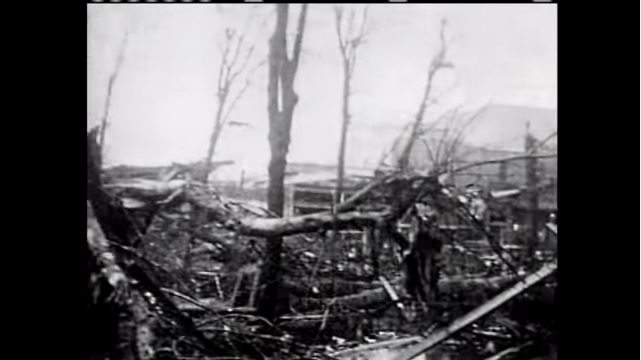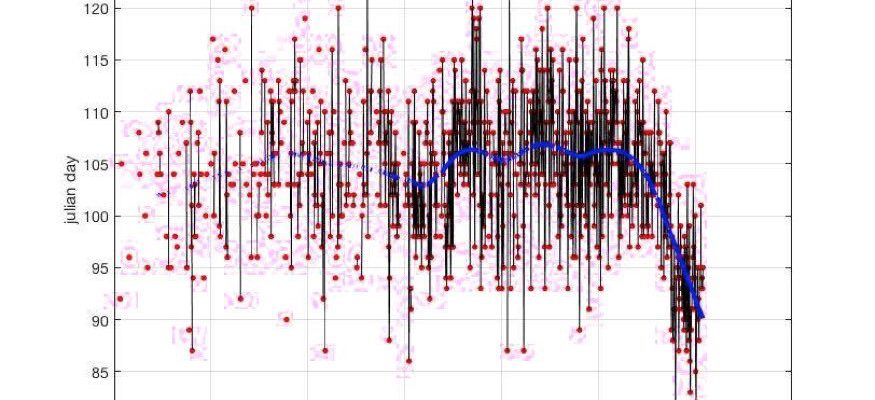History
-

One of the most deadly tornadoes in Georgia history occurred on April 6, 1936, in Gainesville, Georgia. According to AthensGAWeather.com, “the F-4 tornado packed winds up to 260 mph, killed 203 people and injured 934 others. Almost a fourth of the deaths came from fires that burned after the storm struck the city. Although it…
Posted in: History -

It’s no surprise that we are seeing a lot of activity in the severe weather department this week. Historically, this has been a very active time of year across the US, and it’s the main peak of severe weather activity in the Southeast, although we have a secondary peak in fall and tornadoes can and…
-

The record of the blossoming date of cherry trees in Kyoto, Japan, is one of the longest phenological records climatologists have. Historical information on the blossom date goes back all the way to 812 AD, although nearly continuous records are not available until 1406 AD. The dates have recently been compiled into a single record,…
-

Following the launch of Sputnik 1 on October 4, 1957, both the Soviets and the United States went into a flurry of satellite building. As part of that race to space, on April 1, 1960, the National Aeronautics and Space Administration (NASA) launched the Television Infra-Red Observation Satellite (TIROS-1), the world’s first successful weather satellite.…
-

Our NWS radar has come a long ways from the days of the old black and white radars! Now we have dual-pol doppler radar in multi-color with all kinds of bells and whistles, but this image shows what they had to work with in 1973. The hook echo just to the southwest of the center…
-

Tom Moore, formerly of the Weather Channel and now an associate for iWeatherNet.com, has an interesting piece today on the history of weather broadcasting from its earliest inception on television to what it looks like for the future. You can read it at https://www.iweathernet.com/educational/history-broadcast-meteorology.
-

The South Carolina State Climate Office, in conjunction with other cooperators, has released an online story map of the disastrous flooding in October 2015 that has won several awards for its report. You might like to take a look at it. It contains information about the setup for the flood, which included the impacts of…